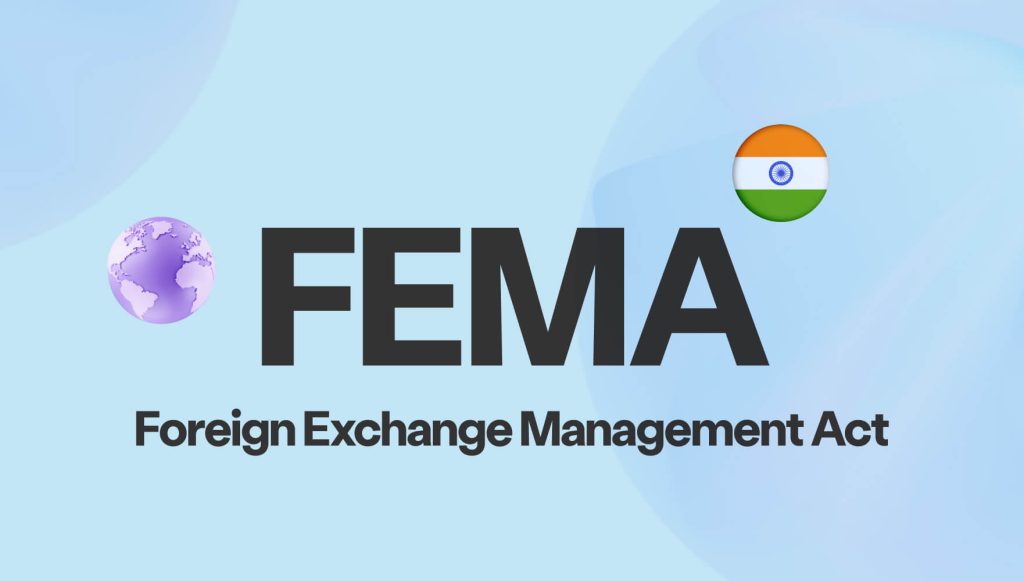FEMA and Inbound Investment: Structuring Transactions for Compliance in India
Keywords: Foreign investment in India, FEMA compliance, Inbound investment structuring, Foreign Exchange Management Act (FEMA) 1999, Reserve Bank of India (RBI), Automatic Route, Approval Route, Foreign Investment Promotion Board (FIPB)
Abstract:
India’s burgeoning economy has attracted significant foreign investment in recent years. However, navigating the complex regulatory landscape surrounding foreign exchange management (FEMA) can be a daunting task for foreign investors. This article explores key considerations for structuring inbound investments in India to ensure compliance with FEMA regulations. It analyses the applicable legal framework, explores various investment routes, and outlines strategies for structuring transactions that meet regulatory requirements and optimize business objectives.
Introduction:
The Foreign Exchange Management Act, 1999 (FEMA) governs foreign exchange transactions in India. FEMA aims to facilitate the orderly flow of foreign exchange while maintaining macroeconomic stability. For foreign investors seeking to enter the Indian market, understanding FEMA regulations is crucial.
This article provides a roadmap for clients receiving foreign investment, focusing on structuring compliant transactions. It highlights the different routes for inbound investment, explores key considerations for structuring, and emphasizes the importance of seeking professional guidance to navigate the regulatory framework.
Understanding the FEMA Framework:
FEMA establishes a two-pronged regulatory approach:
- Automatic Route: Certain transactions are permitted automatically, without requiring prior approval from the Reserve Bank of India (RBI) or other authorities.
- Approval Route: Specific types of investments require prior approval from the Government of India (GOI) or RBI, often through the Foreign Investment Promotion Board (FIPB).
The categorization of an investment under the Automatic or Approval Route depends on various factors like:
- Sectoral caps: Certain sectors have restrictions on foreign investment levels.
- Investment instrument: The type of investment (equity, debt, etc.) can influence the route.
- Investor category: The classification of the investor (foreign institutional investor, non-resident Indian, etc.) plays a role.
Investment Routes for Inbound Transactions:
Several routes are available for foreign investors entering the Indian market:
- Foreign Direct Investment (FDI): FDI allows foreign entities to directly invest in Indian companies by acquiring shares or setting up subsidiaries or branch offices. The permissibility and extent of FDI vary depending on the sector.
- Foreign Institutional Investors (FIIs): FIIs are entities investing in Indian securities markets through registered schemes. FEMA regulations prescribe specific investment limits and permissible instruments for FIIs.
- Joint Ventures (JV): JV involve partnerships between Indian and foreign companies. The structure and investment levels for JV are subject to FEMA regulations and sectoral caps.
- Limited Liability Partnerships (LLPs): LLPs offer an alternative structure for foreign investment, subject to specific FEMA provisions and sectoral restrictions.
Structuring Transactions for Compliance:
Careful structuring of inbound transactions is essential for achieving business goals while ensuring FEMA compliance. Here are some key considerations:
- Entry Mode Selection: Choosing the appropriate entry mode (FDI, FII, JV, etc.) depends on the investor’s objectives, control requirements, and sector-specific regulations.
- Capital Structuring: The mix of equity, debt, and other instruments used for investment should comply with FEMA regulations and sectoral caps.
- Valuation: The valuation of shares or assets involved in the transaction must comply with internationally accepted methodologies as prescribed by FEMA.
- Exit Strategies: FEMA regulations may impose specific requirements on repatriation of invested capital and exit mechanisms for foreign investors.
- Tax Implications: Structuring must consider potential tax consequences under the Income Tax Act and Double Taxation Avoidance Agreements.
Strategies for Optimizing Transactions:
Utilizing Automatic Route: Whenever possible, structuring transactions to fall under the Automatic Route reduces regulatory burden and expedites the investment process.
- Phased Investment: A phased approach to investment allows for gradual entry and compliance with sectoral caps.
- Pre-investment Planning: Early consultation with legal and tax advisors helps identify potential regulatory hurdles and tailor the investment structure accordingly.
- Ongoing Compliance: Maintaining ongoing FEMA compliance through timely reporting and adherence to regulations is crucial.
Conclusion:
India’s vibrant economy presents a lucrative opportunity for foreign investors. However, navigating the intricacies of FEMA is critical for a successful and compliant investment. This article provides a framework for structuring inbound transactions that comply with FEMA regulations while maximizing business goals. It is recommended that foreign investors seek professional guidance to navigate the regulatory landscape and ensure a smooth entry into the Indian market.
DISCLAIMER:
i)This opinion/clarification note is based on the facts provided to us and the same is being issued without any knowledge of intent, prejudice, non-disclosure, misrepresentation, or concealment of facts if any.
ii)We have not done investigation of correctness of facts and the limited opinion
represents our understanding of the provisions of the law on the matter. The
compliance mentioned above is not exhaustive and other compliance may also be involved depending on case to case basis.
iii)The conclusions reached and views expressed are matters of opinion based on our understanding of the related laws, rules, notifications, Citations, circulars, etc.
iv)Alacrity Corporate Solutions Pvt Ltd , its partners, associates,
employees or staff shall not be held liable for any action/ consequence arising out of any contrary view(s) taken by any other party or statutory authority
